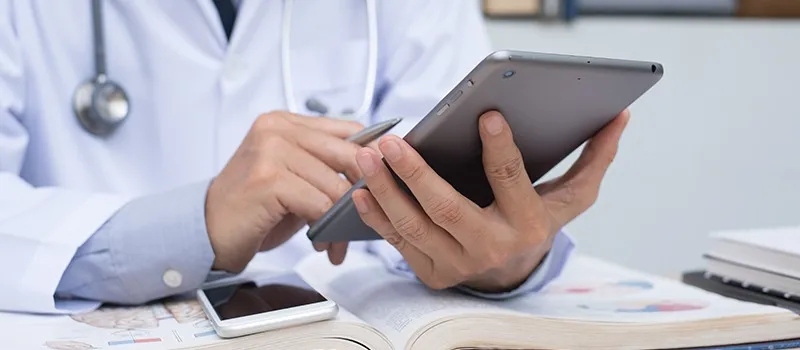The fundamental goal of OBGYN in MBBS is to familiarise students with the anatomy and physiology of the female genital tract, as well as pregnancy physiology and pathology, which includes conception, ANC, labour, and complications. Demography, gynaecological diseases, gynecological endocrinology, infertility, and current developments are also included in the syllabus, as are family planning procedures such as MTP and tubectomy to enable students to actively engage in National family planning programmes. Its goal is to teach students how to detect and treat diseases of the female genital system, as well as aid with normal and emergency OBS and GYN procedures. A gynaecologist is primarily concerned with reproductive health, whereas an obstetrician is concerned with women’s health during and after pregnancy.
Be consistent:
Medical field requires you to be highly consistent and regular. Studying from day 1 saves you from missing anything important that might be discussed in the class. Start by following the index and know how much you have to cover. When you don’t feel like studying, google something of your favourite topic and you will find yourself taking in the most interesting information of that topic. Indulge in discussions with friends; brainstorming makes studying even more interesting.
Be Thorough with the basics:
Wondering how to start studying OBGYN? Make sure you have a firm grasp on the fundamentals, such as normal anatomy first. It’s critical to establish a solid foundation before diving deep into intricacies. You must also concentrate on clinical assessment and procedural abilities. You must also have a thorough awareness of clinical aspects, diagnosis, and therapy among other things.
Choose the correct textbook:
The textbooks you choose in your medical school can have a significant impact on your medical career. When it comes to choosing the right textbooks, “DC Dutta’s Obstetrics textbook” and “DC Dutta’s Gynecology textbook” are excellent resources that the majority of students use to learn. The book’s easy-to-read structure makes it comprehensive and user-friendly. The main attraction of this book is its presentation, which includes high-quality graphics, design, numerous illustrations, high-quality pictures, and imaging studies. To simplify concepts for better clarity, there are numerous tables, boxes, flowcharts, and algorithms. The essential points are listed at the end of each chapter and serve as a summary of the whole chapter. This is beneficial for quick and simple revision. The best method to study DC Dutta is to break it down into sections and then study each one separately.
Watch Videos Online:
The subject is simple if you make it so, and one way to accomplish that is to view online videos on the themes that you find difficult to grasp. You can also check out DigiNerve to watch video lectures of its OBGYN course. With recent modifications to the CBME curriculum, students must now integrate their studies in order to obtain a holistic understanding of the physiology and pathophysiology of the female genital system. Furthermore, they must concentrate on clinical examination and procedural abilities.
Experiential Learning:
Clinical visits are the best way to learn and enhance your practical point of view. One technique is to learn and memorize facts from books, but you’ll comprehend a lot more if you’re present and witness it unfold.
A separate lecture illustrating the principles of clinical examination on a mannequin has been prepared in the OBGYN for UnderGrads course by DigiNerve to help students grasp the basics of clinical examination. This will assist students to build confidence in performing procedures in clinical practice by enhancing their conceptual understanding. The topics have been made more interesting by using a variety of case studies to provide a practical perspective to the research. To aid memorizing, the lectures are lavishly illustrated with clinical and radiological pictures, as well as flowcharts, tables, and boxes.
Additionally, dummy-assisted breech delivery has been demonstrated, which is tremendously beneficial to students.
Make notes:
This is a dynamic subject that necessitates conceptual clarity along with extensive revision. To revise the right way, resorting to your notes at the time of exams helps to recall the topics better. Since it is impossible to open big volumes just before exams, notes make the information concise to memorize and save time. If by any chance you have missed making notes of a particular topic, you can find them online on DigiNerve app, which provides trusted notes by eminent faculty.
FAQs
-
How many years does it take to become a gynecologist?
After completing your MBBS and internship, you must pass the NEET PG exam and obtain a master’s degree in obstetrics and gynecology. It takes about seven to eight years to become one.
-
Is gynecology a good career?
Gynecology is currently one of the highest paying careers in medicine; it is a well-respected and prestigious field.
-
What does an Obstetrician do?
An obstetrician is a doctor who specializes in obstetrics, which entails dealing with all aspects of prenatal and postnatal care, as well as having training in women’s health and pregnancy. They are experts in assisting women throughout labor and delivery.
-
How is Gynecology different from Obstetrics?
Gynecology is concerned with women’s reproductive health, whereas obstetrics is concerned with women’s health and pregnancy. Gynecology is concerned with women’s reproductive health, whereas obstetrics is concerned with women’s health and pregnancy.

